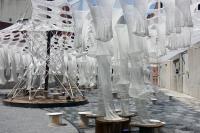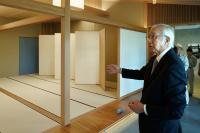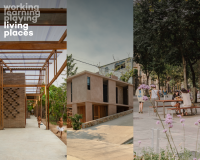La Borda - Cooperative Housing
Barcelona, Spain
Name of work in English
La Borda - Cooperative Housing
Name of work in original language
Cooperativa d'habitatges La Borda
Placement
Emerging Architecture Winner
Prize year
2022
Authors
Arnau Andrés Gallart (1985 Spain); Eliseu Arrufat Grau (1985 Spain); Ariadna Artigas Fernández (1985 Spain); Carles Baiges Camprubí (1985 Spain); Ana Clemente Granados (1985 Spain); Eulàlia Daví Borrell (1985 Spain); Cristina Gamboa Masdevall (1985 Spain); Ernest Garriga Vallcorba (2021 Spain); Mirko Gegundez Corazza (1985 Spain); Lluc Hernández Torns (1985 Spain); Laura Lluch Zaera (1985 Spain); Pol Massoni Mangues (1985 Spain); Jordi Miró Bover (1985 Spain); Núria Vila Vilaregut (1985 Spain)
Collaborators
Engineering: Arkenova Structural engineering: Miguel Nevado Technical architect: AumedesDAP Consulting: Societat Orgànica , PAuS - Coque Claret & Dani Calatayud Acoustical: Grisel·la Iglesias Project management: José Juan Martínez Larriba Others: La Ciutat Invisible , Holon
Program
Collective housing
Labels
Courtyard, Social
Total area
627 m2
Usable floor area
3071 m2
Cost
840 €/m2
Client
Habitatges La Borda SCCL
Client Type
private
Map
LatLng: (41.369589, 2.1348593)
La Borda cooperative housing is a self-organized development to access decent, non-speculative housing. It contains 28 units (40, 60 and 75m²) and several community spaces: kitchen-dining room, laundry, multipurpose space, guestrooms, health space, storages, and exterior and semi-exterior spaces such as the patio, bike parking and terraces. The idea of a housing cooperative was born in 2012 as a project of Can Batlló driven by the community in the process of recovery of the industrial premises, and the neighborhood and cooperative fabric of the Sants neighborhood of Barcelona. The project is located on a public land of social housing, with a leasehold of 75 years. Located in Constitució Street, in a bordering position of the industrial area of Can Batlló with a facade to the existing neighborhood of La Bordeta. The project aimed to redefine the collective housing program, while creating sustainable building and including user participation at its center. La Borda's commitment to a community model opposed to the more traditional public or private promotions has made it possible to overcome some major limitations that are imposed on architectural projects. In the public sector, the fear of the future user, which is totally unknown, makes it impossible to introduce changes that may affect the way of living standardized. In the case of the private developers, the logic of the market that impoverish housing are imposed to facilitate their assimilation to a consumer object. The innovation of the development process has been key to work the architecture beyond its formalization. We identify five characteristics of this model that have a direct response in the project: self-promotion, right of use, community life, sustainability and affordability. The cooperative prioritized making a building with minimal environmental impact, both in its construction and its lifetime. Another basic objective is to eliminate the possibility of energy poverty among its users, which some of them suffered due to the high cost of energy. The initial strategy of the project to reduce energy demand has been the optimization of the program, renouncing the underground car parking, grouping services and reducing the surface of the houses. The maximum bioclimatic parameters have been introduced to achieve a very passive building, with solutions that involve active action by users in the climate management of housing. The result is almost zero energy consumption, and therefore, the comfort in the houses with the least associated cost. The structure of six floors is done using Cross Laminated Timber wood (CLT). This is a lightweight, high quality, renewable material in the environment that allows closing cycles, unlike conventional construction materials such as steel or concrete, whose production has a very high energy cost and are not renewable. La Borda is currently the highest building constructed using wood structure in Spain.
















